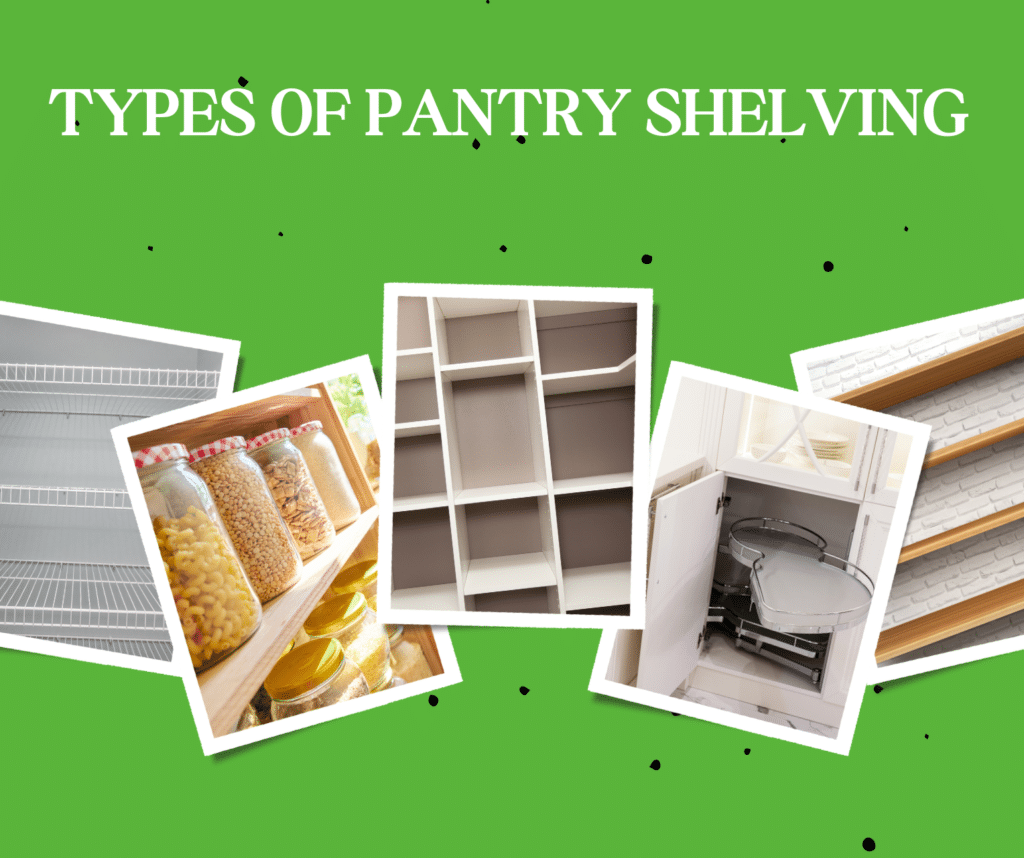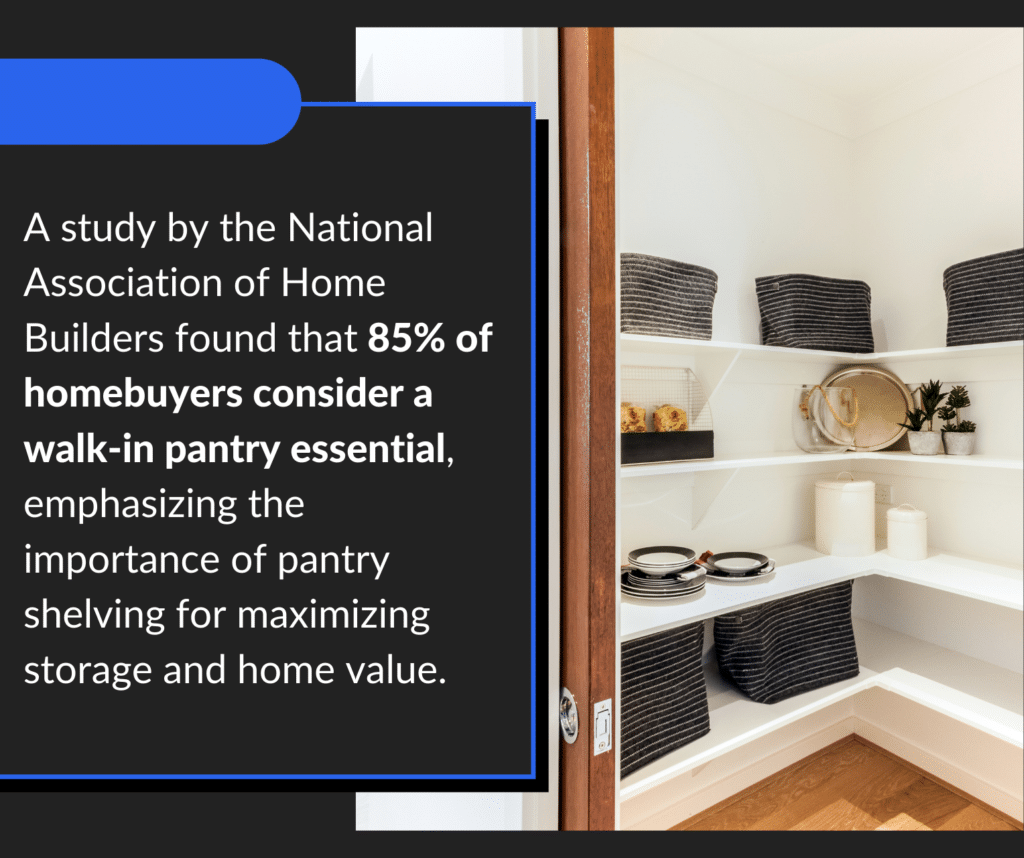A well-organized kitchen starts with efficient pantry shelving. Whether you have a small pantry or a large walk-in space, the right shelving can completely transform how you store and access food, kitchen appliances, and household essentials. Without proper organization, pantries can quickly become cluttered, making it difficult to find what you need and leading to unnecessary food waste.
As home inspectors, we often see homeowners overlook the importance of pantry shelving, focusing only on aesthetics rather than safety and functionality. However, weak, sagging, or improperly installed shelves can pose risks, not only to your food storage but also to your home’s overall integrity. In this guide, we’ll explore the benefits of well-planned pantry shelving, types of shelving to consider, and installation tips to ensure durability, efficiency, and safety.
Benefits of Proper Pantry Shelving
Good pantry shelving does more than just make your kitchen look tidy—it significantly improves functionality. A well-organized pantry helps homeowners save time, reduce stress, and even cut down on food waste.
- Maximizes Storage Space: The right pantry shelving allows you to utilize every inch of your pantry, from floor to ceiling, ensuring that no space goes to waste.
- Enhances Accessibility: Organizing shelves properly makes it easier to see and grab items quickly, reducing the frustration of digging through cluttered spaces.
- Prevents Food Waste: When you can clearly see what’s in your pantry, you’re less likely to let food expire or purchase duplicate items unnecessarily.
- Improves Kitchen Efficiency: A well-organized pantry means fewer trips to the store and a smoother cooking process, as everything you need is within reach.
- Boosts Home Value: Homebuyers appreciate well-thought-out storage solutions, and well-installed pantry shelving can be a small but valuable selling point.
Types of Pantry Shelving

When choosing pantry shelving, it’s important to select an option that fits your needs, style, and budget. Here are the most common types of shelving used in kitchen pantries:
- Wire Shelving: Affordable and lightweight, wire shelving provides good airflow, reducing the risk of mold or mildew buildup. However, it may not be the best choice for storing heavy kitchen items, as it can bend over time.
- Wood Shelving: A classic and sturdy choice, wood shelves offer a warm and traditional look. They can support heavier items, but they need to be properly sealed to prevent moisture damage.
- Adjustable Shelving: If you want flexibility in your pantry setup, adjustable shelving is a great option. These shelves allow you to modify the height based on your storage needs, accommodating everything from tall cereal boxes to small spice jars.
- Pull-Out Shelving: For deep pantries, pull-out shelves or drawers make accessing items much easier. Instead of reaching far into the back, you can simply slide the shelf out to grab what you need.
- Floating Shelves: A more modern and decorative option, floating shelves create an open-concept pantry space. However, they typically have lower weight limits, making them more suitable for lighter items like glass jars or decorative storage bins.
Common Pantry Shelving Mistakes to Avoid
Even with the best intentions, homeowners often make mistakes when installing or organizing pantry shelving. Some of these errors can lead to safety hazards, reduced storage efficiency, and even damage to your home.
One of the biggest mistakes is overloading shelves beyond their weight capacity. Shelving that isn’t designed to hold heavy items like large flour bags or kitchen appliances can sag or even collapse, potentially causing injury or property damage. Additionally, many homeowners fail to secure their pantry shelving properly. Shelves that are not anchored to studs or installed with the correct hardware can become loose over time, leading to an unstable pantry setup.
Another common issue is not considering moisture and ventilation. If your pantry is in a humid area, such as near the kitchen sink or an exterior wall, certain shelving materials like unsealed wood can warp over time. Wire shelving may help with ventilation, but it doesn’t provide the solid surface needed for all types of food storage.
Lighting is another overlooked factor. A poorly lit pantry makes it difficult to find items quickly, leading to clutter and frustration. Installing LED strip lights or motion-activated lighting can make a significant difference in visibility. Additionally, many homeowners fail to utilize vertical space effectively. By installing taller pantry shelving or using stackable storage bins, you can maximize storage without making the pantry feel cramped.
Key Considerations for Pantry Shelving Installation
When installing pantry shelving, it’s essential to focus on durability and safety. Here are some important factors to keep in mind:
- Weight Capacity: Be sure your shelves can hold the weight of bulk food items, kitchen appliances, and glass containers without sagging.
- Secure Mounting: Always use proper wall anchors and mount shelves into studs to prevent them from coming loose over time.
- Moisture Resistance: If your pantry is prone to humidity, choose moisture-resistant materials to prevent warping or mold growth.
- Spacing Between Shelves: Adjust shelf heights to optimize storage for different-sized items, such as tall jars, canned goods, and small baskets.
- Ease of Cleaning: Shelves with smooth, non-porous surfaces are easier to clean and help maintain a sanitary pantry.

Home Inspector’s Advice: Ensuring Safe and Durability
As home inspectors, we frequently assess pantry shelving for signs of instability, poor installation, and material deterioration. Homeowners should regularly check their pantry shelves for any signs of sagging, loose brackets, or mold growth, as these can indicate underlying issues. If you notice shelves starting to pull away from the wall or feel wobbly when weight is applied, it may be time to reinforce them or consider replacing them with a sturdier option.
Another key tip is to distribute weight evenly across shelves. Placing heavy items on top shelves can create a tipping hazard, while overloading lower shelves may cause strain on the supports. Whenever possible, store the heaviest items at waist level or below for both convenience and safety.
If you’re planning a pantry remodel or upgrading your pantry shelving, hiring a professional can be a smart investment. While DIY shelving projects can be cost-effective, improper installation can lead to costly repairs down the line. A professional installer can ensure that your shelves are securely mounted and optimized for your storage needs.
Conclusion
A well-planned pantry shelving system is key to maintaining an organized and efficient kitchen. By choosing the right materials, securing shelves properly, and avoiding common mistakes, you can create a pantry that makes everyday cooking and grocery storage easier. Homeowners should also periodically inspect their shelving for any signs of wear and tear to prevent potential safety hazards.
Beyond organization, pantry shelving is just one small part of what makes a home safe and functional. As home inspectors, we check for stability, safety hazards, and proper installation—not just in your pantry, but throughout your entire home. If you’re planning a renovation or just want peace of mind about your home’s condition, schedule a professional home inspection with us. We’ll make sure your pantry shelving, kitchen, and overall home structure are in great shape, helping you protect your investment for years to come.
